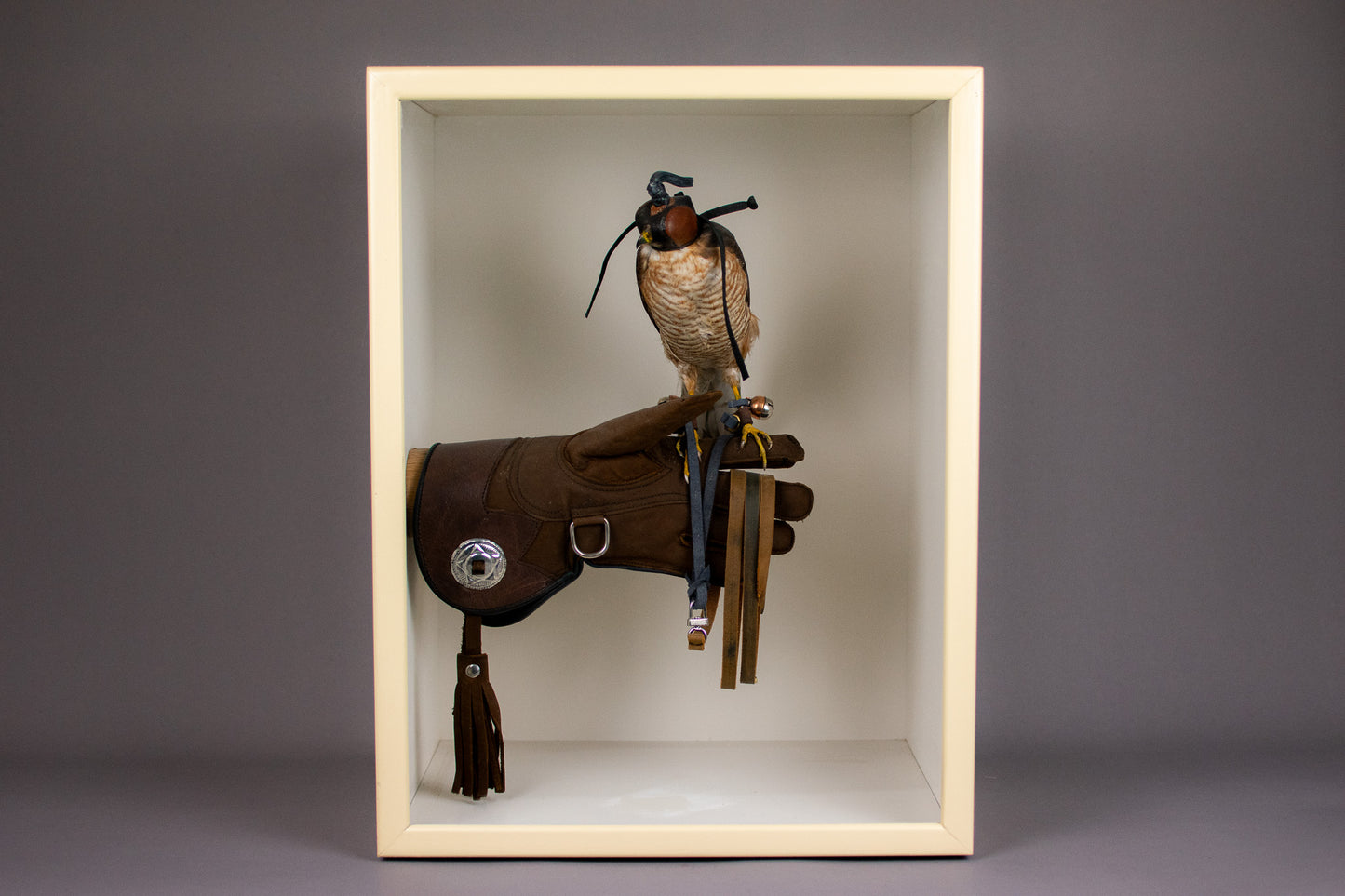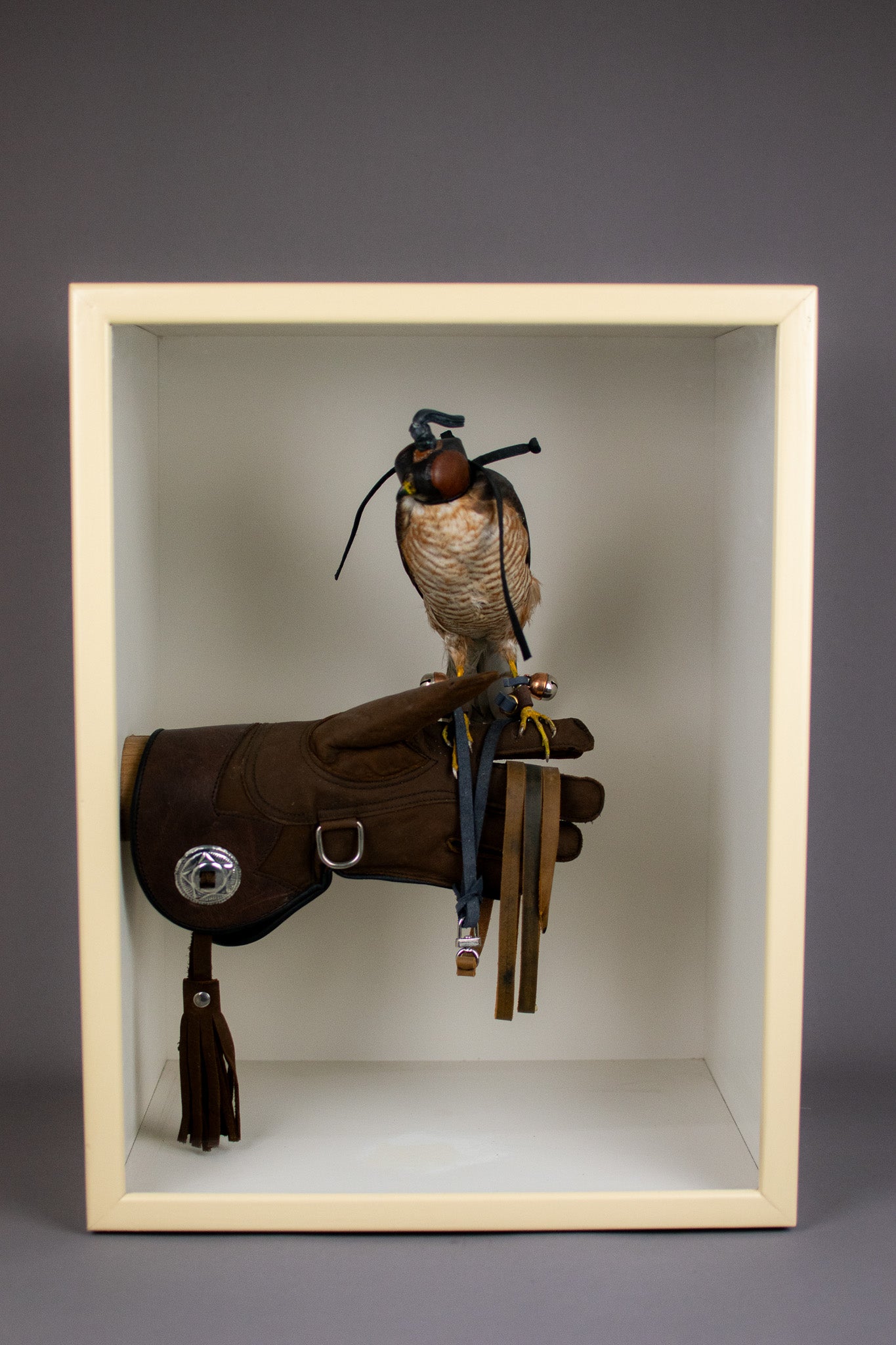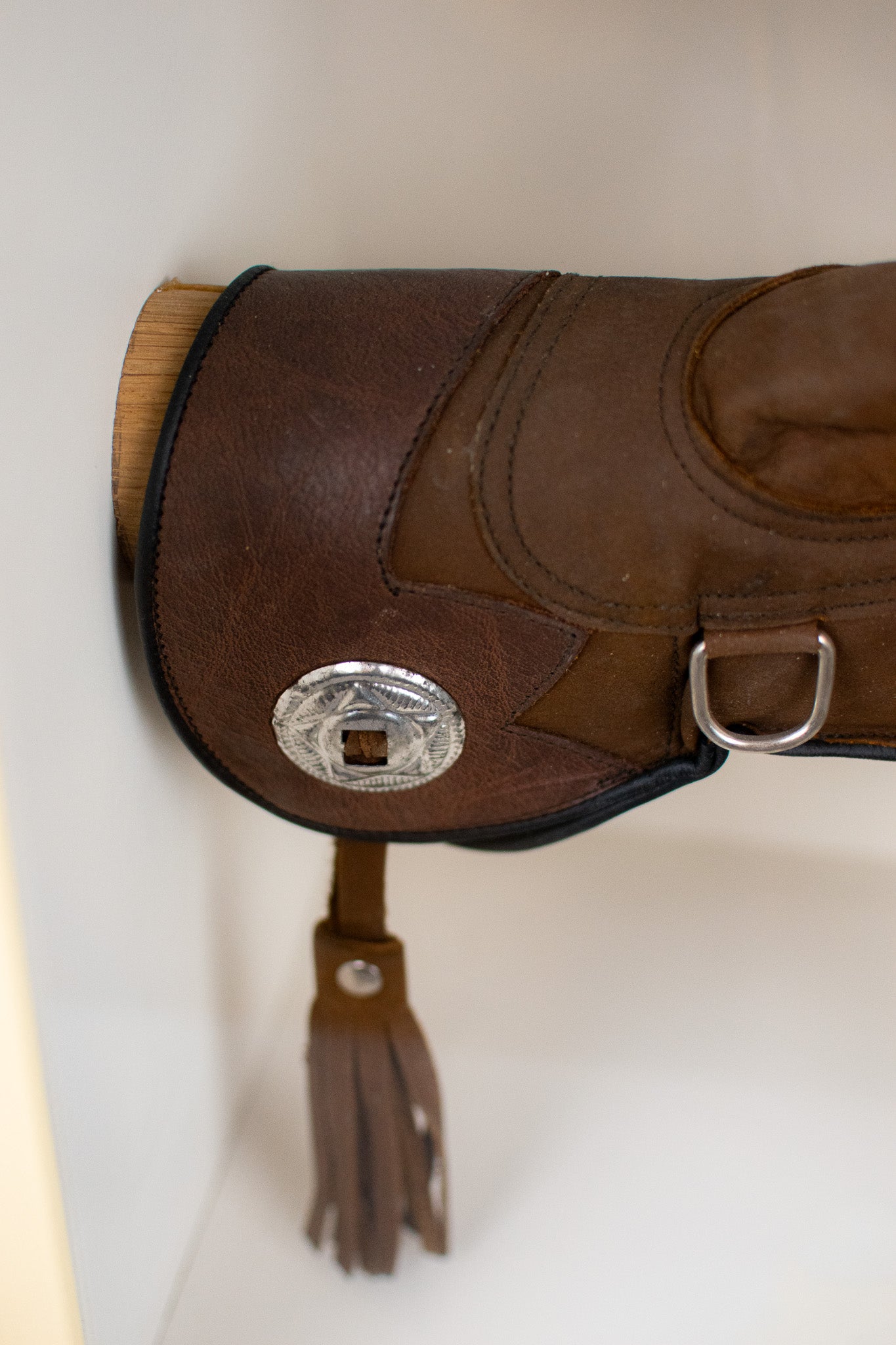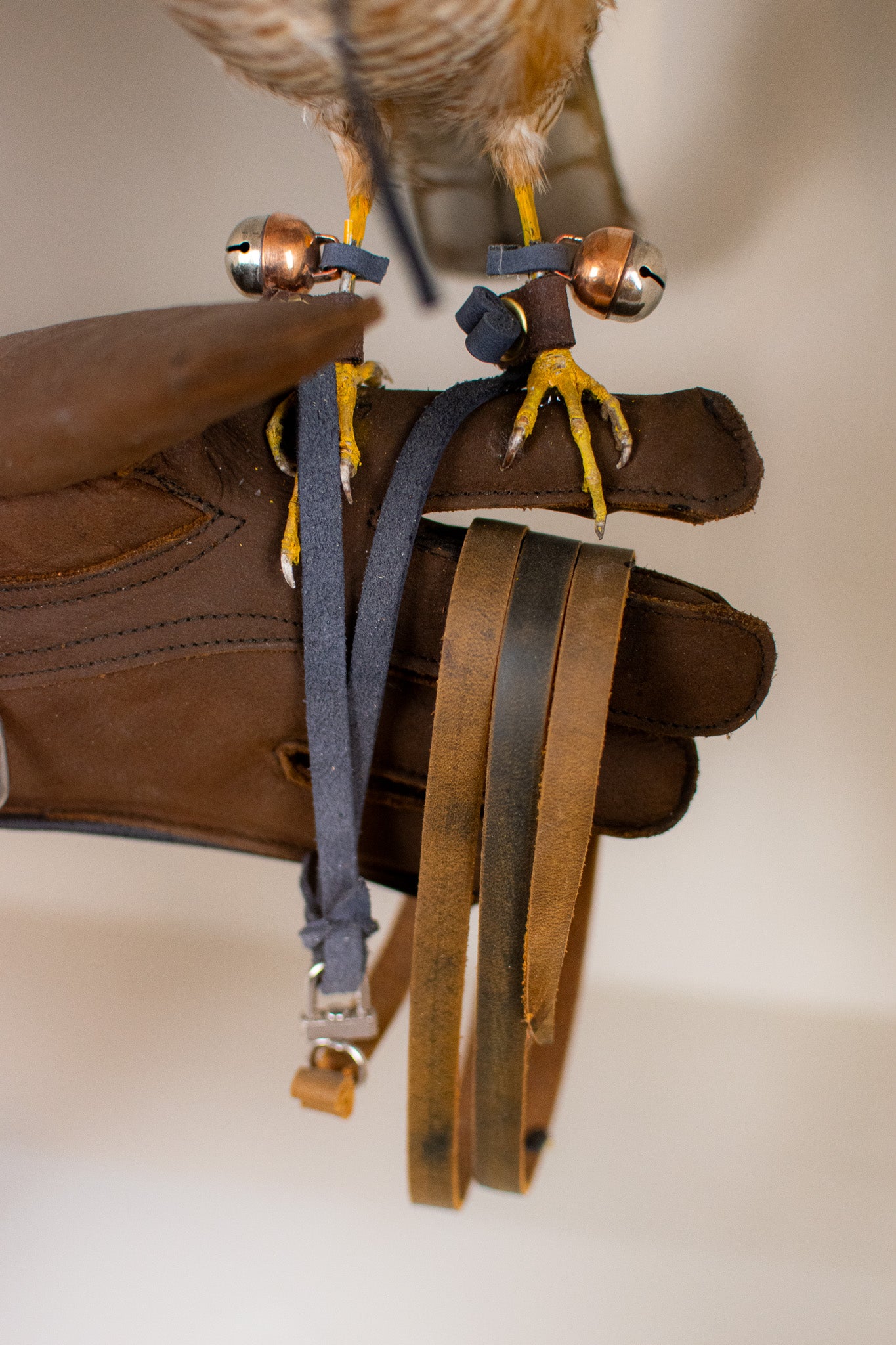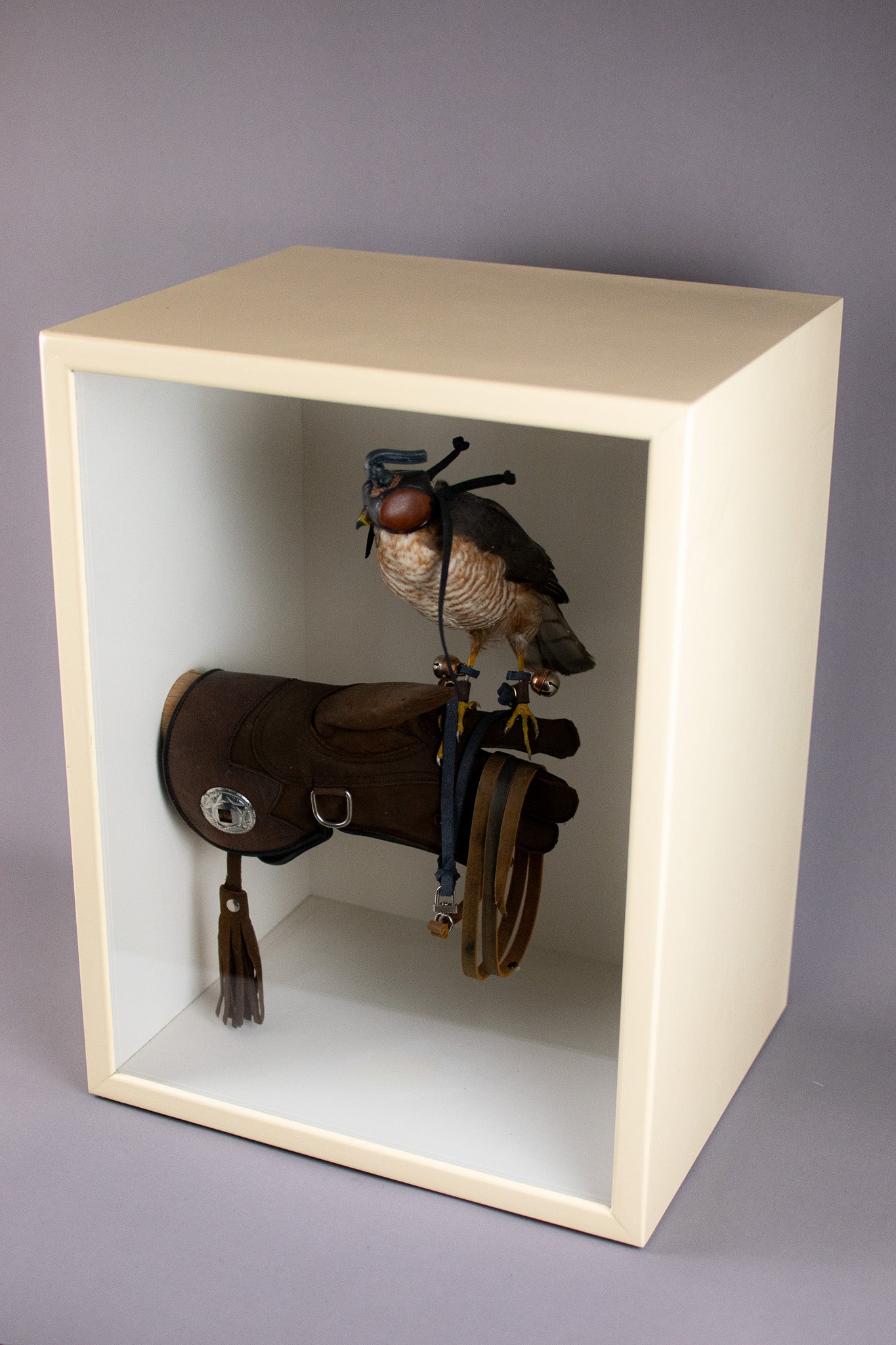House of Eliza
Taxidermy Cased European Sparrowhawk (Accipiter nisus) Circa Early 20th Century
Taxidermy Cased European Sparrowhawk (Accipiter nisus) Circa Early 20th Century
Couldn't load pickup availability
Share
An early 20th century full mount adult male perched upon a falconer's gauntlet, wearing a hood and leather jesses to the legs, mounted within a plain painted interior, re-cased within a modern cream painted single-glass display case.
Perfect for any falconer.
Circa 1900s
Condition report:
In fantastic condition.
Please note, colours may vary depending on your screen.
Dimensions
Height: 20'' Width: 15'' Depth: 12''
History of Falconry
Falconry, defined as the practice of hunting wild animals in their natural environment using trained birds of prey, has a rich history with its origins traced back to ancient Mesopotamia around 2,000 BC. It later found its way to Europe in approximately 400 AD. Through the ages, falconry served as a symbol of social status, with regal individuals like Henry VIII being enthusiastic falconers who favored majestic birds like gyrfalcons and merlins. Conversely, those of lower social standing often employed birds like kestrels and buzzards. The consequences for individuals possessing birds of prey outside their social stratum were severe, even including the possibility of having their hands amputated.
Falconry primarily served as a means of procuring food for one's family, but its popularity waned with the advent of firearms, which provided a more efficient and cost-effective way of obtaining prey. However, in the late 19th and early 20th centuries, a resurgence of interest in falconry occurred, partly due to the publication of various falconry books. This resurgence transformed falconry from a necessity into a recreational pursuit, enjoyed as a pastime, passion, and hobby by numerous enthusiasts.
